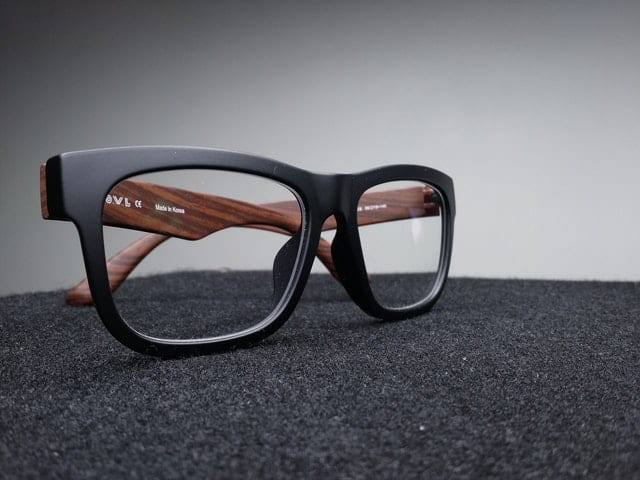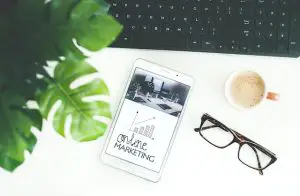Introduction
Managers wishing to create more efficient management models for their fashion firm can look at a set of decisions that look at strategic opportunities to take advantage of their value chain. In this blog post, we are going to address three major factors that contribute to the creation of value and to the delivery of high-quality fashion products.
In order to understand how the value chain can assist managers in visualizing the complex operational processes of a supply chain, we’d like to refer you to another useful post on our blog: a brief introduction to the business of fashion. Specifically, we’re going to look at how companies can enhance their value proposition through a series of supply-chain operations. Here’s a breakdown of the post’s content:
- Licensing to produce prét-a-porter lines
- Licensing to produce masstige and product extensions
- The licensing contract explained
- Textile and raw materials as a source of competitive advantage
- Conclusions
1. Licensing to produce the second lines
Here’s a simple definition: licensing is defined as the process of leasing a trademark or a copyrighted entity (the property) used together with a product, service or promotion. The property is in most cases intellectual (intangible) in nature.
Historically we see an evolution in the use of licensing agreements. In the mid of the 1900s, Italian manufacturers used their industrial expertise and craftsmanship to produce prét-a-porter collections. At the time, french couture was not only a very expensive and time-consuming business but was also, in many cases, unprofitable. The luxury couture market in fact was not capable of producing collections which aside from being hardly affordable by the noble class, did not really have any aspirational appeal to the higher tiers of society.
On another hand, however, leveraging the craftsmanship and industrial processes mastered by Italian manufacturers, a new fashion segment, the prét-a-porter line, could be a new and exciting way to make fashion accessible to a much wider audience.
Licensing, in this case, allowed to manage complex relationships between Italian designers, such as Giorgio Armani with industrial manufacturers, such as the Gruppo Finanziario Tessile. Licensing is, in fact, a contract typology that is able to manage both the tangible and intangible (intellectual property) value of a good, establishing a close and productive partnership between creatives and industrialists.
In the following paragraph, we’ll look at another ample use of the licensing agreements, this time created by French luxury brands to amplify the monetization streams deriving from the untapped equity of their brands.
2. Licensing to produce masstige and product extensions
As we have discussed in the post: market segmentation in the fashion industry, the brands competing in the high-end of the fashion pyramid are addressing a fairly limited audience o HNWI (high net worth individuals). On the other hand, the value associated with luxury heritage brands is among the highest in the industry and many additional ways could be identified to tap into this equity.
One of the most successful ways in which companies are able to access a much wider market by leveraging the aspirational and exclusivity values of their brands is through masstige product lines. Masstige stands for affordable luxury, mass-prestige and consists typically in the creation of product lines in the beauty, eyewear and fragrance departments which allow utilizing a luxury brand to apply premium pricing to a commodity, such a lipstick or a perfume.
In this case, however, fashion brands do not build their own manufacturing plants to access these markets but create licensing agreements with companies which are specialized in producing these products according to their requested specifications. Firms such as Luxottica or L’Oreal are examples of licensees who act as third-party providers of manufacturing services. Licensing is – if you like – a type of manufacturing contract which allows manufacturers to fully acknowledge the value brought by the brand when attached to a commodity.
In the following paragraph, we’re going to discuss in greater detail what this contract entails.
3. The licensing contract explained
The licensing contract typically entails a relationship between two parties: a licensor (the brand owner) and a licensee (the manufacturer). The license relates to the permission to use a trademark and style for production andor distribution of one or more product categories. Usually, the license is limited:
- geographically, to a specific territory
- in relation to a specific distribution channel
- for a pre-determined amount of time
The contract can foresee that the licensor will get a royalty – a percentage on wholesale sales. The licensor also receives an initial licensing fee. The licensor, however, might also be asked to provide a contribution to the promotion of the newly created product line.
On the other hand, the licensee develops prototypes and the final product samples. The licensee will also decide the pricing, distribution, and conditions of sale. This does not mean however that the licensor is unable to express opinions in other product management decisions. On the contrary, in many cases, the licensor will still have a say in the marketing mix, and in the communication and media plan.
Because of the strong degree of interaction between the parties, a foundation of trust is essential. As we already mentioned the two most important categories for licensing agreements are:
- Eyewear. Eyewear, from a medical device, became a fashion accessory, also because of its visibility it allows for good brand recognition. Luxottica is an example of a very famous eyewear manufacturer, along with having its own brands like Ray-Ban and Persol.
- Fragrances. Fragrances are also a popular licensing category, as they present unique characteristics, such as a short product life-cycle, a strong brand image, and their use as gifts. L’Oreal is an example of a fragrance manufacturer.
So what are the benefits and costs associated with licensing?
Benefits include:
- The sharing of risks and costs between licensee and licensor
- The earning of an initial licensing fee and income royalties
- Gaining the ability to achieve faster market penetration.
On the other hand, undeniably, licensing entails for a few disadvantages:
- Licensors have diminished the ability to enforce control and CSR issues
- There is a risk of infringement upon the licensor’s intellectual property
- The licensing agreements can make products less responsive to the market
As previously stated, the best way to avoid these issues entails creating a strong foundation of trust and partnership to avoid any issues in the creation of the final product.
4. Textile and raw materials as a source of competitive advantage
Looking at the supply chain, there are other areas where companies can create new edges for a competitive advantage. One of these areas relates to raw material extraction and textile sourcing. As we discussed in other posts concerning fashion sustainability, material sourcing, and textile production are two very important areas of operation for any fashion company. Textiles can contribute to a brand’s overall perceived value in light of the following factors:
- Textiles contribute to the final product value proposition, via the fabric which makes up the final fashion product.
- Certain customer segments (connoisseurs) are able to appreciate the fabric itself, more than the brand of the product
- Textile companies can pursue a vertical integration strategy, by leveraging the value of their production
- The Made in Italy, the Italian country of origin factor is highly dependent on the Italian fashion pipeline
The importance of textiles is also emphasized by the ingredient branding strategy. Ingredient branding allows companies to bring a product, which was initially conceived in the realm of a business to business relationship to the consumer market to allow it to gain recognition. This way the focus on the label allows to emphasize a particular element of the product’s fabric (for instance gore-tex, lycra, etc.) Ingredient branding is a win-win relationship as the promotion of the quality of what is inside becomes part of the persuasion to pay a premium price.
5. Conclusions
In this post, we discussed how managers can create a more efficient management of company operations by disposing strategically of the relationships and partnerships developed in their brand’s value chain.
- Licensing allows exploiting economies of scale and leveraging the equity contained in the brand to tap its full value potential.
- Textiles can be a point of strength of any fashion product, and excellence in materials sourcing can provide a necessary edge to double down on HNWI and connoisseur clients
- Ingredient branding allows companies to use their ‘behind-the-curtains’ partnerships to create an additional marketing draw to their products.
These examples show how the value chain, is not only useful from an operational perspective but is in each stage, a powerful marketing asset.
If you’re interested in learning more about the Fashion Industry, don’t hesitate to take a look at our course “The Fashion Industry: Explained”. Our in-depth class covers a wide range of topics spanning from understanding fashion customers and markets to developing immersive retail experiences for your customers. Here’s a link to the course, if you use the discount code BLOG20 you can access a 20% discount. Enjoy!







